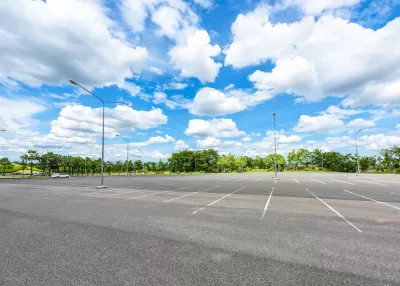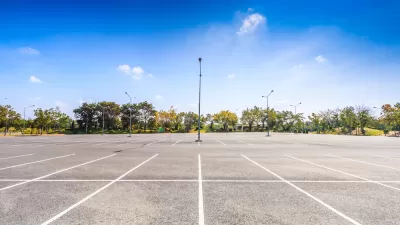As more cities eliminate or reduce their minimum parking requirements, the impact on housing supply is coming into focus.

Evidence from cities that have reduced or eliminated parking requirements shows that the changes have led to new housing construction — the expected outcome for many parking reform and housing advocates who say unnecessary parking minimums drive up the cost of housing, limit development on smaller lots, and induce sprawl.
According to an article by Martha C. White in The New York Times, “A 2022 study by the Regional Plan Association, a nonprofit group focused on the New York City area, found that more low-income housing was built in city neighborhoods where parking requirements were reduced.” In Seattle, 60 percent of new development after parking reform would not have been possible under the city’s old regulations.
Despite concerns about not having enough parking, the availability of parking is often about management rather than quantity. “Housing advocates, developers and urbanists harboring visions of less car-centric cityscapes say the rules have little to no bearing on actual demand for parking.” Moreover, removing parking minimums doesn’t prevent developers from building as much parking as they believe is needed.
FULL STORY: What Happens When There Are Fewer Spaces to Park?

Trump Administration Could Effectively End Housing Voucher Program
Federal officials are eyeing major cuts to the Section 8 program that helps millions of low-income households pay rent.

Planetizen Federal Action Tracker
A weekly monitor of how Trump’s orders and actions are impacting planners and planning in America.

The 120 Year Old Tiny Home Villages That Sheltered San Francisco’s Earthquake Refugees
More than a century ago, San Francisco mobilized to house thousands of residents displaced by the 1906 earthquake. Could their strategy offer a model for the present?

HSR Reaches Key Settlement in Northern California City
The state’s high-speed rail authority reached an agreement with Millbrae, a key city on the train’s proposed route to San Francisco.

Washington State Legislature Passes Parking Reform Bill
A bill that would limit parking requirements for new developments is headed to the governor’s desk.

Missouri Law Would Ban Protections for Housing Voucher Users
A state law seeks to overturn source-of-income discrimination bans passed by several Missouri cities.
Urban Design for Planners 1: Software Tools
This six-course series explores essential urban design concepts using open source software and equips planners with the tools they need to participate fully in the urban design process.
Planning for Universal Design
Learn the tools for implementing Universal Design in planning regulations.
Ada County Highway District
Clanton & Associates, Inc.
Jessamine County Fiscal Court
Institute for Housing and Urban Development Studies (IHS)
City of Grandview
Harvard GSD Executive Education
Toledo-Lucas County Plan Commissions
Salt Lake City
NYU Wagner Graduate School of Public Service





























